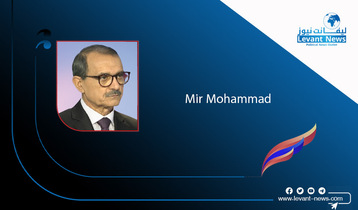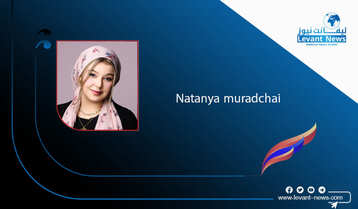-
Syria’s Chemical Legacy

This week a newly empowered unit at the Organisation for the Prohibition of Chemical Weapons (OPCW) is expected to point the finger at the Assad regime as responsible for a series of chemical attacks during the country’s over nine year civil war. Chemical Legacy
Whilst confirmation of what most observers already knew won’t be a game changer that will alter the fundamental trajectory of the conflict, it is an important landmark towards future accountability efforts with consequences in terms of sanctions in the near term.
The use of chemical weapons has been a strategic catalyst throughout the conflict. The fact that the Regime was willing to use them showed how desperate it was, especially in the earlier years when it’s survival was in question. Since then the use of the weapons has reflected a growing confidence that Damascus will be protected from any serious sanction and is part of the growing fog of impunity that has enveloped the country.
The Syrian regime must have realised that using this tactic would bring greater international attention on their actions, after all, the US-Russian agreement back in 2013 on disarming Syria's chemical weapon stock was a major junction in preventing more overt US intervention. Many had thought that the use of these barbaric weapons, truly the worst of humanity, would signify the ‘red line’ that President Obama outlined as a way of constraining Assad’s behaviour.
Before the conflict Syria was estimated to have access to several hundreds of tonnes of sulphur mustard, several hundreds of tonnes of sarin, and several tens of tonnes of the more potent and persistent nerve agent, VX. The US has said the Syrian military has access to "thousands of munitions" that could be used to deliver chemical agents, including long- and short-range missiles, aerial bombs and artillery rockets. Chemical Legacy
In messy, largely urban, civil wars the tactical use of chemical weapons was limited and instead they symbolised a weapon of terror that would often trigger the movement of large numbers of civilians fleeing the area. The weapons have their own legal prohibitions and gatekeepers in the form of the OPCW - although it is only now that they have been mandated to point the finger at who is responsible for using the weapons.
The ‘terror’ value of the weapon is usually linked to the means of death. As footage has shown painful suffocation caused by inhaling the toxins is a slow and drawn out process. What is more, unlike conventional weapons that tear bodies apart and leave scenes that cannot be shown on mainstream media, often chemical attacks can leave victims without any apparent injuries. Images of lines of entire families, seemingly sleeping, were able to be on the front page of papers and have been shared more widely than even more deadly conventional attacks.
Arguably the ultimate chutzpah of the Regime to date in ignoring the prohibition of such weapons was the used of them in the Ghouta area of Damascus that killed some 1,400 people in 2013 - taking place three days after the arrival of a UN mission charged with looking into previous chemical weapons attacks. Chemical Legacy
Roll forward a few years and more than 80 people were killed in a chemical attack on the rebel-held town of Khan Sheikhoun in north-western Syria on the 4th April 2017. Hundreds suffered symptoms consistent with reaction to a nerve agent after what the opposition and Western powers said was a Syrian government air strike on the area.
The chemical attack would trigger international response like conventional attacks hadn’t. President Trump ordered US missile strikes against the airbase that the chemical attacks were launched from. Trump went on to explain US attacks as being in response to what was “a slow and brutal death for so many. Even beautiful babies were cruelly murdered in this very barbaric attack. No child of God should ever suffer such horror”.
Chemical horror apparently is an unacceptable horror compared with the other horrors unleashed in Syria, although they’ve continued to occur becoming one of the defining tactics that explains the character of the conflict. This week’s report is accompanied by a new dataset put together by Researchers from the Global Public Policy Institute in Berlin along with Syrian and international partners who have compiled 345 credibly substantiated or confirmed attacks across the country since 2011, building on what the institute described as years of painstaking research. Chemical Legacy
levant
The most explicit ‘naming and shaming’ of the perpetrators of chemical attacks to date will likely lead to further sanctions of the Syrian government and individuals and organisations within it. It will also make Damascus’s attempts to find reintegration into the international community that much harder in the medium term. In the long term as Martin Luther King reminded us - “the arc of the moral universe is long but it bends toward justice”. One day those who made the decisions to drop nerve gas on women and children may well have to answer for their crimes and it will be the evidence released this week that may convict them. levant
You May Also Like
Popular Posts
Caricature
BENEFIT Sponsors Gulf Uni...
- April 17, 2025
BENEFIT, the Kingdom’s innovator and leading company in Fintech and electronic financial transactions service, has announced its sponsorship of the “Innovation and Sustainable Technology Solutions Competition (GU - IST Solutions), hosted by Gulf University at its main campus.
This strategic sponsorship reflects BENEFIT’s active role in advancing technological innovation and fostering sustainable solutions to future challenges. It also seeks to empower Bahraini youth by enhancing their skills, capabilities, and competitiveness in innovation and solution development—contributing meaningfully to the broader goals of sustainable development across all sectors.
As part of BENEFIT’s active involvement in the competition, the company has announced that Hanan Abdulla Hasan, Senior Manager of Public Relations and Communication, will serve on the competition’s supervisory committee. Her upcoming participation reflects BENEFIT’s forward-looking commitment to championing academic and professional excellence.
Commenting on the occasion, Hanan Abdulla Hasan, Senior Manager of Public Relations and Communication at BENEFIT, said, “We are privileged to support this pioneering initiative, which aligns seamlessly with BENEFIT’s enduring commitment to fostering innovation and nurturing the potential of Bahrain’s youth. Our participation is rooted in a deep sense of social responsibility and a firm belief in the pivotal role of innovation in shaping a sustainable future. Through such platforms, we seek to empower the next generation with the knowledge, skills, and foresight required to develop impactful solutions that address future challenges, in line with the United Nations Sustainable Development Goals 2030.”
Dr. Aseel Al Ayash Dean of the College of Engineering in Gulf University commented, “We extend our sincere gratitude to BENEFIT for their generous sponsorship and support of the Innovation and Sustainable Technology Solutions Competition. This contribution plays an instrumental role in helping us achieve the strategic goals of this initiative, namely, cultivating a culture of innovation and sustainability, encouraging efforts that address the imperatives of sustainable development, and enhancing the practical and professional capabilities of our students and participants.”
The event will bring together a diverse spectrum of participants, including secondary school students, university undergraduates, engineers, industry professionals, entrepreneurs, academic researchers, and subject matter experts representing a wide range of disciplines.
The competition seeks to inspire participants to develop and present innovative, sustainable technologies aimed at addressing pressing environmental, social, and economic challenges. It encourages the formulation of business models that integrate advanced technological solutions with core principles of sustainability. Moreover, it serves as a platform for emerging leaders, entrepreneurs, and innovators to contribute to the advancement of the Sustainable Development Goals, promote the ethos of responsible technology, and demonstrate its transformative potential across various sectors.
Attendees will have the opportunity to view a series of project presentations submitted by participants, covering diverse areas such as eco-friendly product design, smart and sustainable innovations, renewable energy technologies, water conservation and management, waste minimisation and recycling, green architectural solutions, and sustainable transportation systems. Outstanding projects will be formally recognised and awarded at the conclusion of the event.
opinion
Report
ads
Newsletter
Subscribe to our mailing list to get the new updates!






















